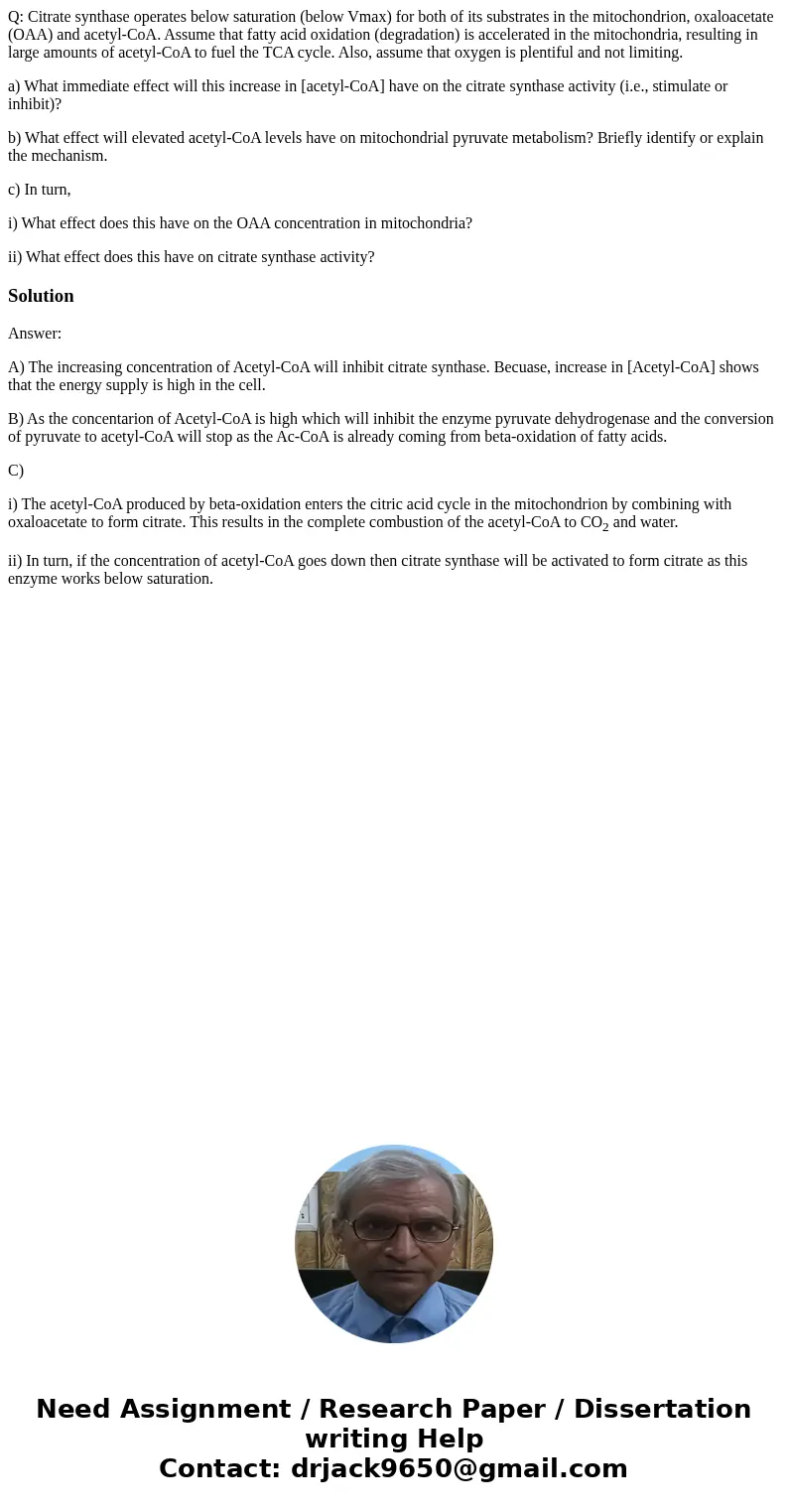Q Citrate synthase operates below saturation below Vmax for
Q: Citrate synthase operates below saturation (below Vmax) for both of its substrates in the mitochondrion, oxaloacetate (OAA) and acetyl-CoA. Assume that fatty acid oxidation (degradation) is accelerated in the mitochondria, resulting in large amounts of acetyl-CoA to fuel the TCA cycle. Also, assume that oxygen is plentiful and not limiting.
a) What immediate effect will this increase in [acetyl-CoA] have on the citrate synthase activity (i.e., stimulate or inhibit)?
b) What effect will elevated acetyl-CoA levels have on mitochondrial pyruvate metabolism? Briefly identify or explain the mechanism.
c) In turn,
i) What effect does this have on the OAA concentration in mitochondria?
ii) What effect does this have on citrate synthase activity?
Solution
Answer:
A) The increasing concentration of Acetyl-CoA will inhibit citrate synthase. Becuase, increase in [Acetyl-CoA] shows that the energy supply is high in the cell.
B) As the concentarion of Acetyl-CoA is high which will inhibit the enzyme pyruvate dehydrogenase and the conversion of pyruvate to acetyl-CoA will stop as the Ac-CoA is already coming from beta-oxidation of fatty acids.
C)
i) The acetyl-CoA produced by beta-oxidation enters the citric acid cycle in the mitochondrion by combining with oxaloacetate to form citrate. This results in the complete combustion of the acetyl-CoA to CO2 and water.
ii) In turn, if the concentration of acetyl-CoA goes down then citrate synthase will be activated to form citrate as this enzyme works below saturation.

 Homework Sourse
Homework Sourse